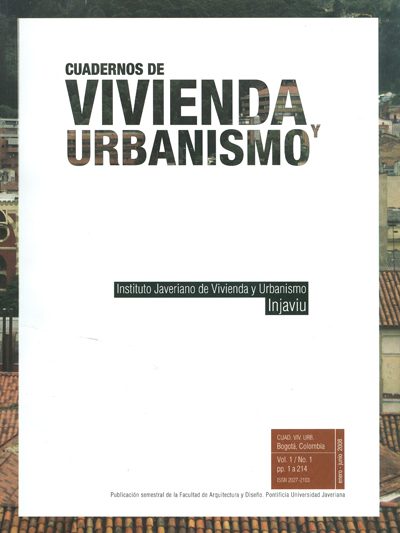Resumen
Este es un estudio sobre morfología del crecimiento en la ciudad intermedia colombiana, a partir del análisis de Tunja durante el siglo XX. Con él se pretende contribuir al entendimiento de la producción y transformación de la ciudad y de su relación con el territorio. La lectura morfológica revela claves para entender la sociedad que produce la ciudad. Dado que la mayor parte del suelo urbano ha sido ocupado por usos relacionados con la vivienda, esta ponencia se concentra en esos tipos de uso. Las ciudades de países en desarrollo son vistas generalmente como desordenadas, por eso, antes de hacer esta aproximación simplista, se aspira encontrar una lógica de ocupación asociada a formas heredadas y a relaciones de poder entre agentes urbanos. En este sentido, se responden las siguientes preguntas: ¿Cuáles son las formas de crecimiento urbano en Tunja y su relación con los agentes urbanos?, ¿cuál es la expresión espacio-temporal e influencia de los agentes que construyen ciudad? Las respuestas a estas preguntas son útiles para formular políticas, planes y proyectos que modifiquen situaciones problemáticas y, a su vez, para sugerir mecanismos adecuados para lograrlo.
Esta revista científica se encuentra registrada bajo la licencia Creative Commons Reconocimiento 4.0 Internacional. Por lo tanto, esta obra se puede reproducir, distribuir y comunicar públicamente en formato digital, siempre que se reconozca el nombre de los autores y a la Pontificia Universidad Javeriana. Se permite citar, adaptar, transformar, autoarchivar, republicar y crear a partir del material, para cualquier finalidad (incluso comercial), siempre que se reconozca adecuadamente la autoría, se proporcione un enlace a la obra original y se indique si se han realizado cambios. La Pontificia Universidad Javeriana no retiene los derechos sobre las obras publicadas y los contenidos son responsabilidad exclusiva de los autores, quienes conservan sus derechos morales, intelectuales, de privacidad y publicidad.
El aval sobre la intervención de la obra (revisión, corrección de estilo, traducción, diagramación) y su posterior divulgación se otorga mediante una licencia de uso y no a través de una cesión de derechos, lo que representa que la revista y la Pontificia Universidad Javeriana se eximen de cualquier responsabilidad que se pueda derivar de una mala práctica ética por parte de los autores. En consecuencia de la protección brindada por la licencia de uso, la revista no se encuentra en la obligación de publicar retractaciones o modificar la información ya publicada, a no ser que la errata surja del proceso de gestión editorial. La publicación de contenidos en esta revista no representa regalías para los contribuyentes.


